Everything we learned at AMD's Computex 2022 keynote
More details were given on the Ryzen 7000 Zen 4 processors
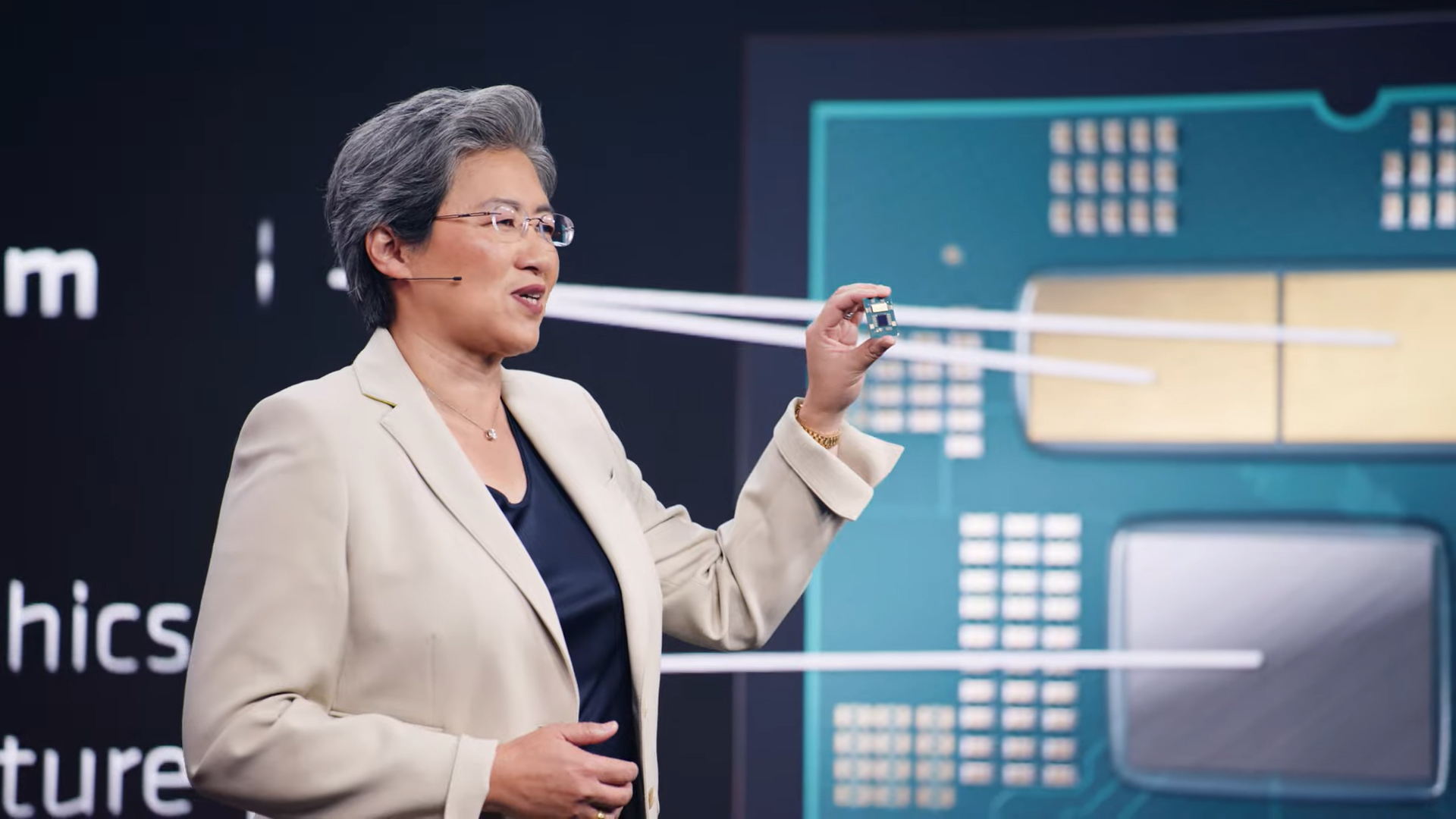
AMD at Computex 2022 gave us our next long-awaited look at both the AMD Ryzen 7000 Series desktop CPUs and the AM5 socket as a whole. Things look incredibly promising, and while no specific launch date was announced, we now know to expect AMD's next generation of processing hardware in Fall 2022. This roughly places the release date between September and December of this year, which is consistent with rumors and prior speculation ahead of the event.
Dubbed the 'world's first 5nm PC processor', the Ryzen 7000 series is set to be the smallest and most powerful chipset line on the market, with Zen 4 CPU core chiplets in 5mn. The physical CPU shown off at the event included a larger 6mn I/O die which includes integrated AMD RDNA 2 graphics, advanced low-power architecture, and, perhaps most crucially, the DDR5 and PCIe 5.0 controller.
While we've endeavored to bring you everything we know about Ryzen 7000 series, having confirmation of the key features, and physical demos of the hardware, was certainly reassuring. We're bringing you everything we learned at AMD's Computex 2022 event as it happened on everything from the new processors, motherboards, and advancements made in the gaming laptop space.
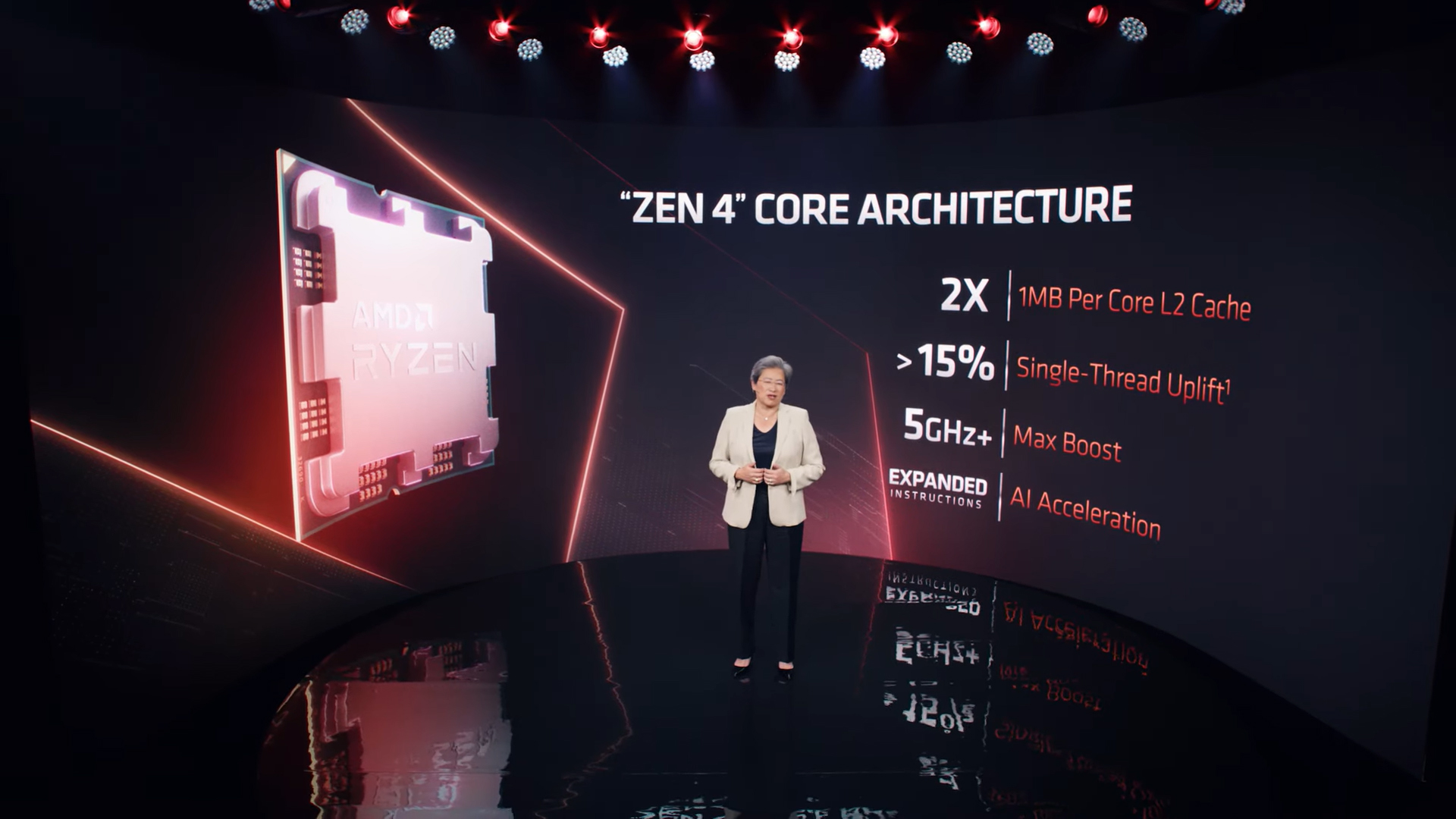
What we learned about Ryzen 7000 Zen 4 processors
Built upon Zen 4 Core architecture, the Ryzen 7000 series will be significantly faster and more power efficient than what's been possible throughout the previous generation running on the AM4 socket. It's now been confirmed that the Ryzen 7000 series will utilize 1MB per core L2 cache, 2x that of the Ryzen 5000 line, with a single-thread uplift of up to 15%, and max boost clock speeds of upwards of 5.0 GHz.
Having now given our first proper look at the Ryzen 7000 series, the unit of which ran on 8 Zen 4 cores, we can expect that this new CPU line will be incredibly fast thanks to the bandwidth afforded by PCIe 5.0. What's more, with DDR5 support, there's a very strong chance that AMD can surpass Alder Lake as the best CPUs for gaming with all that's been demonstrated, but we won't know that for certain until the chipsets are released later this year.
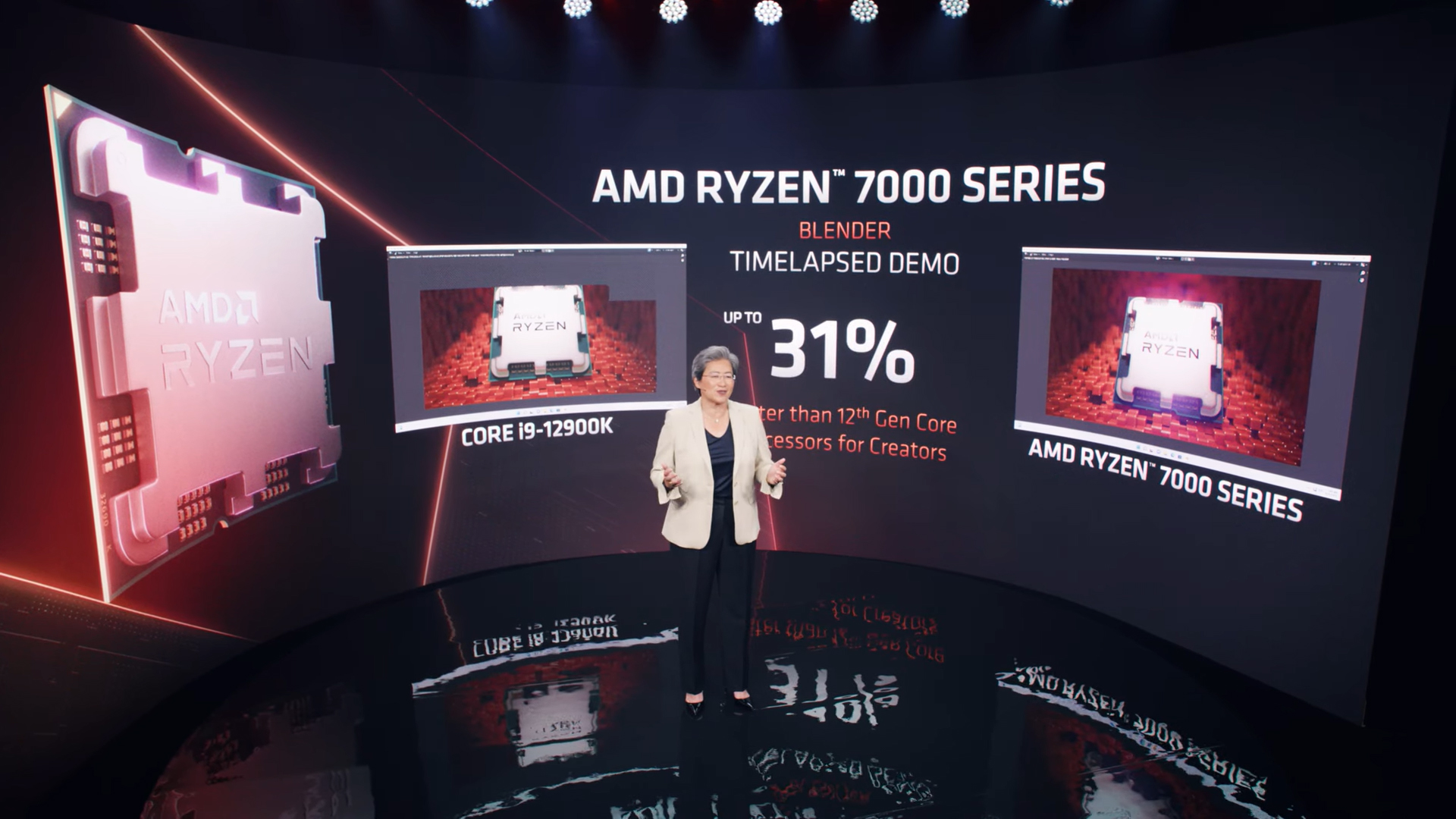
These are some impressive numbers, sure, but the proof comes down to gameplay performance after all. Fortunately, the Keynote concluded with a gameplay demo of Ghostwire Tokyo running on an as-of-yet unspecified 16-core Ryzen 7000 Zen 4 CPU, clocked at 5.5 GHz. If we were to speculate, this model could very well be the equivalent to the Ryzen 9 5950X (16-cores; 32-threads) in terms of performance, potentially a Ryzen 9 7950X, though no such title was given.
A far better visual example in our opinion could be found in the time-lapsed demo from Blender with the unmarked AMD Ryzen 7000 series CPU competing against, and beating, the Intel Core i9-12900K. It was claimed that the Ryzen 7000 series CPU completed the process 31% faster than Intel's current flagship chipset. That's impressively quick, and a great demonstration of multi-core hardware rendering in action.
Sign up to the GamesRadar+ Newsletter
Weekly digests, tales from the communities you love, and more
As for how this translates to differences in gameplay performance, that has yet to be seen.
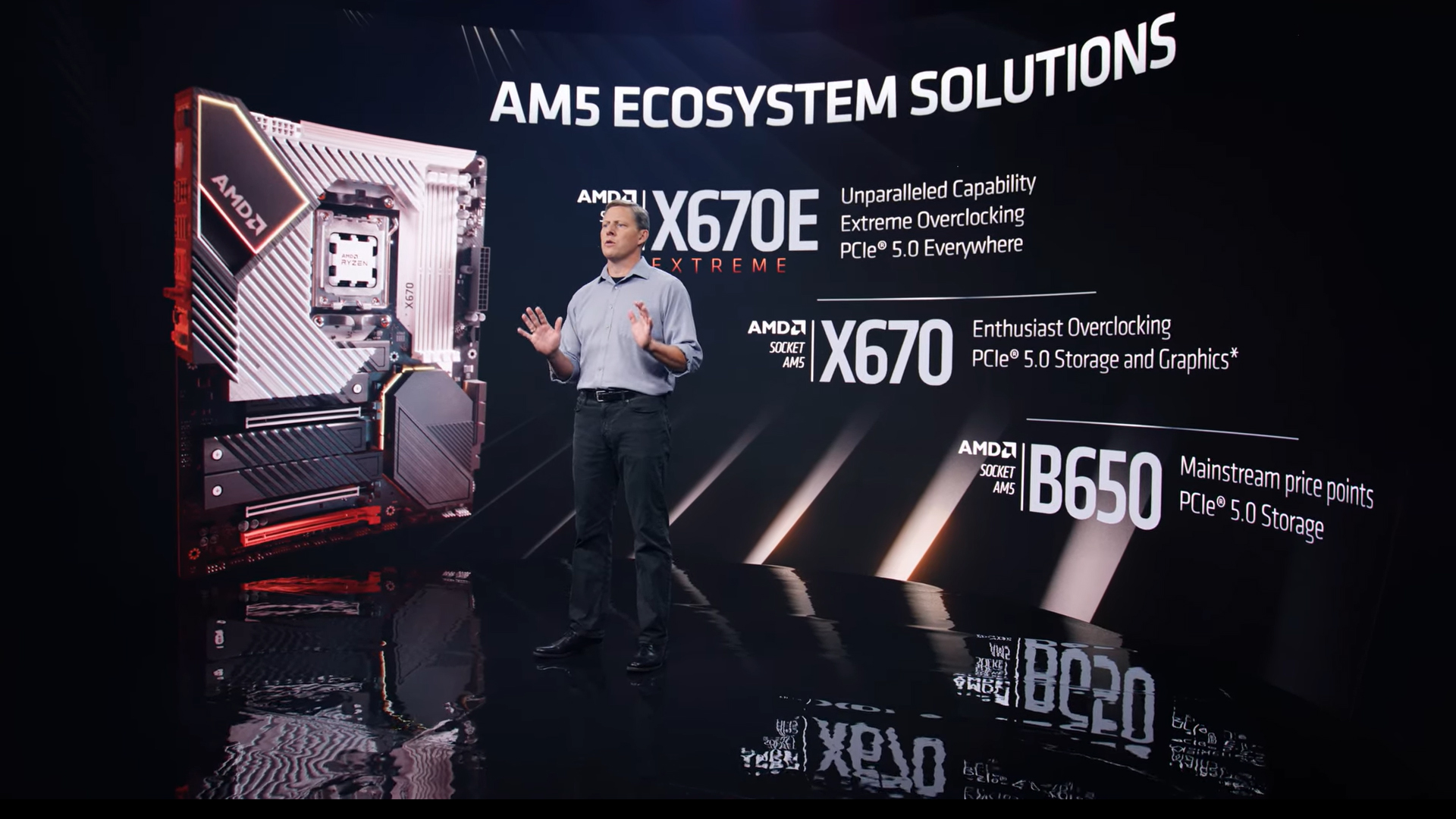
Here's what we learned about AM5 Motherboards
Socket AM5 infrastructure features a 1718 pin LGA socket, with support for up to 170W TDP, DDR5, and PCIe 5.0. What's sure to be a welcome addition for many PC gamers is the confirmed compatibility for Socket AM4 coolers, so you won't need to splash out on proprietary new gear to keep the upcoming processor generation cool. Alder Lake runs on LGA 1700, so it remains to be seen what AMD's slightly larger processors can do in terms of increased performance power.
There are 24 PCIe 5.0 lanes used for both storage and graphic, and support for up to 14 SuperSpeed USB 3.2 (20Gbps) and Type-C for modern I/O connectivity. On that front, AM5 socket motherboards are confirmed to include WiFi 6E (support for 6Ghz band wireless) and up to 4 HDMI 2.1 and DisplayPort 2 ports.
Three levels of AM5 motherboards to suit consumer needs. This begins with the B650 (budget boards with PCIe 5.0 storage capabilities), X670 (which have support for enthusiast-level overclocking as well as PCIe 5.0 storage and graphics), and X670E Extreme (features the most extensive overclocking capabilities and PCIe 5.0 across the board). Some flagship AM5 motherboards were shown off by the likes of AsRock, Asus, Biostar, Gigabyte, and MSI, with a particular focus on the X670E models.
We've known about AM5 for some time now, and a new socket was long overdue considering the transition from 7nm to 5nm. AM4 has been used for several of AMD's processor lines, including the 3000 series and 5000 series, so the change was certainly needed to push next-gen performance in 2022.
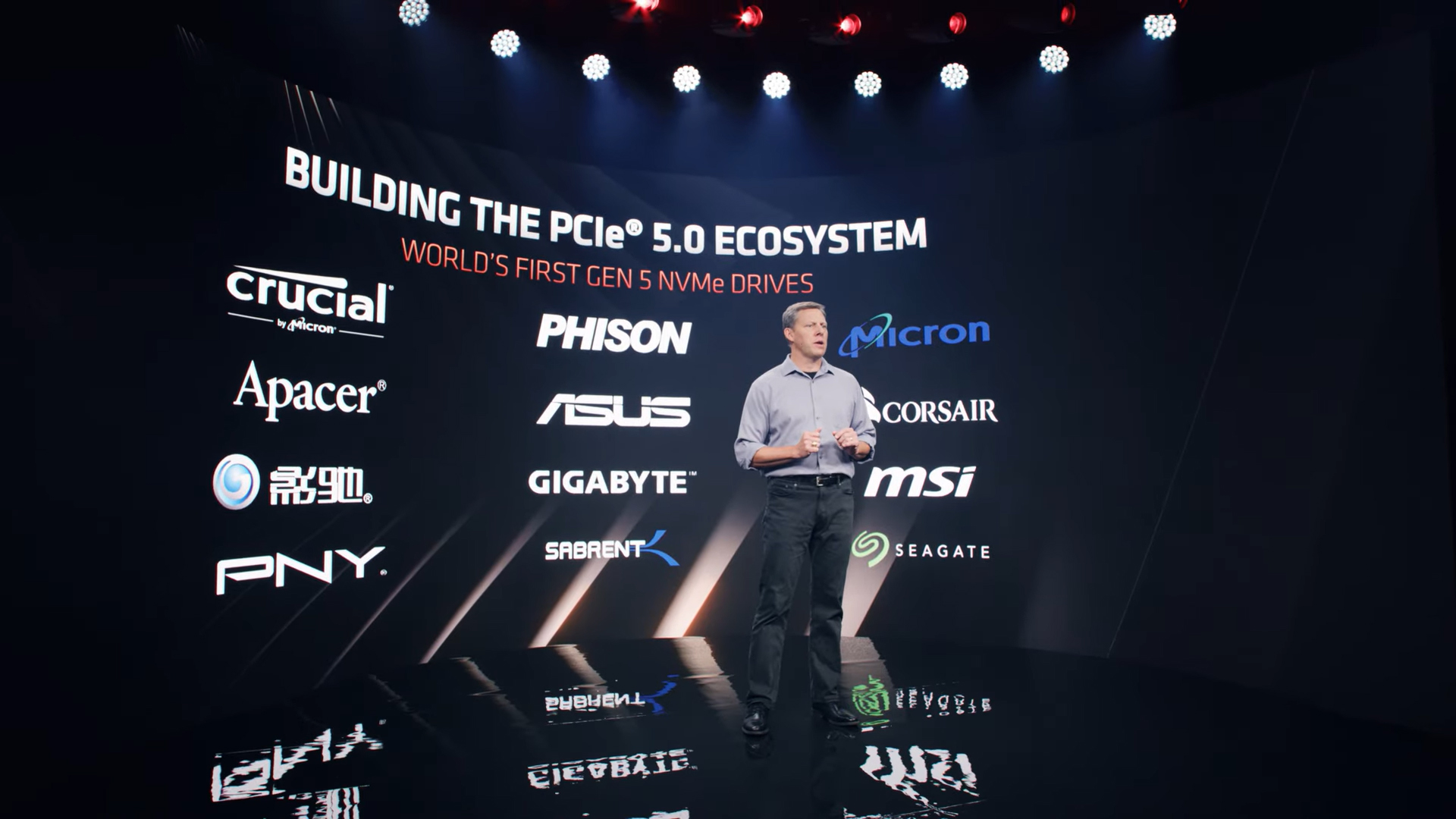
What does PCIe 5.0 on AM5 socket mean for SSDs?
Perhaps the most exciting development with the AM5 socket is support for what the company claims to be the 'world's first Gen 5 NVMe drives'. This means that the best SSDs will only get faster, far exceeding the 8,000 MB/s sequential performance cap of what's currently possible through Gen 4.0. A few names that were confirmed to be delivering Gen 5 NVMe SSDs to Socket AM5 include Asus, Corsair, Sabrent, PNY, and Crucial, with Phison's logo also present (makers of the E18 controller).
During AMD's Computex presentation, it was stated that we can expect a projected increase of up to 60% faster sequential read speeds. No specific rates were given, however, judging that Gen 4.0 tops out at about 8,000 MB/s, though no consumer drive to date has hit this limit, we could be seeing sequential performance as high as 12,800 MB/s in the next coming years. Verbally confirmed was that Crucial and Micron will be launching Gen 5 drives alongside the launch of the AM5 socket.
This is consistent with the jump from Gen 3 to Gen 4, with a rough 61% performance increase between the generations. Gen 3 was capable of up to 3,500 MB/s, and we're seeing current-gen drives nearly double that in 2022, so the future remains bright and incredibly fast.
AMD Gaming Laptop announcements
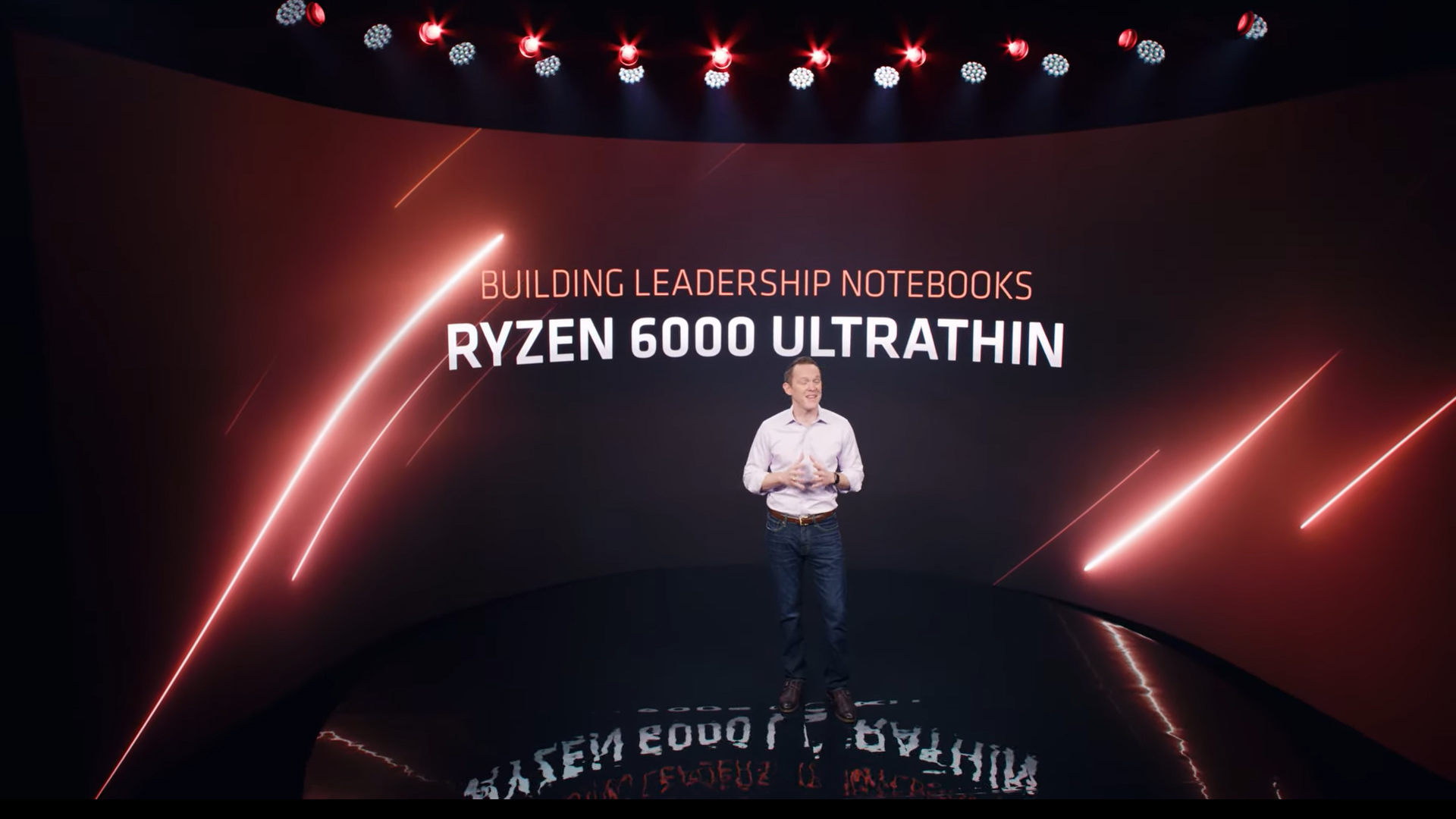
More AMD Ryzen 6000 laptops are coming
With over 72 laptops being confirmed to be in development or launching on the Ryzen 6000 platform, AMD has confirmed its continued development into the field of ultrabook notebooks. Zen 3+ architecture looks to offer up to 45% faster 3D graphics through RDNA 2 architecture, as well as up to 27% faster 3D rendering and as much as 18% faster for office production tasks with the U-series.
Several ultrabooks, including that of the Lenovo Yoga Slim 7 Pro X, had their entry-level 1080p gaming performance benchmarks published. According to the statistics, the RNDA 2-enabled machine could run the likes of Shadow of the Tomb Raider and Final Fantasy XIV at 59 FPS and 64 FPS respectively in Full HD. No specifics were given as to settings, but we can assume that AMD SuperResolution (A.I. upscaling tech) was used where possible. While unlikely to blow anyone away, these numbers go to show that even non-gaming laptops are capable of pumping out more than playable numbers.
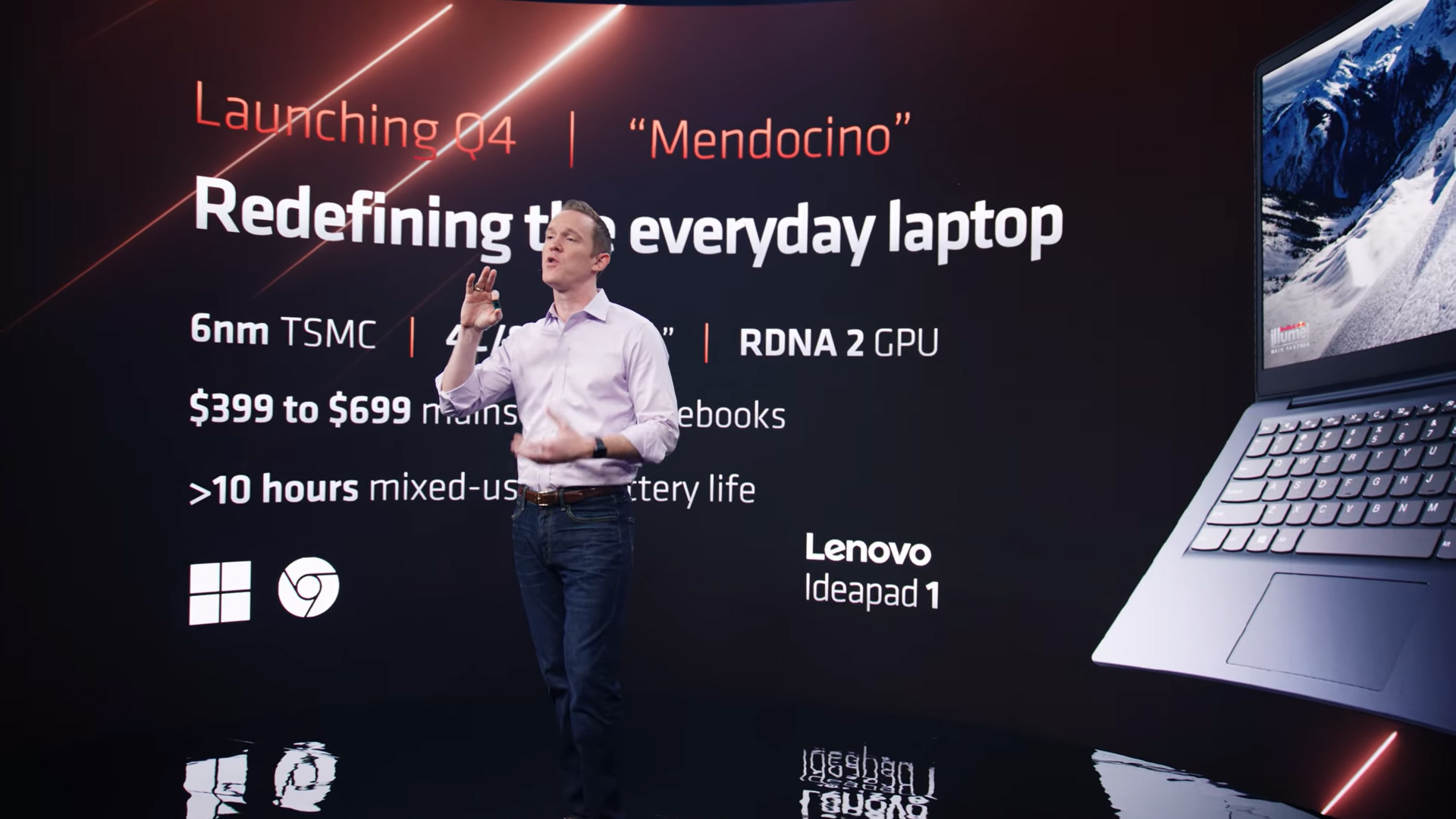
AMD "Mendocino" APU coming to budget laptops
AMD announced a new APU named "Mendocino" which has been made to occupy the budget space in the laptop world in machines priced between $399 and $599. Launching in Q4 2022, this new APU runs on the same 6nm technology as the Ryzen 6000 mobile chipsets with up to 4-cores (8 threads) on the Zen 2 framework. The largest difference between Mendocino and prior entry-level AMD mobile processors is the jump to RDNA 2 integrated graphics instead of the tried-and-true Vega line, and LPDDR5 memory.
What does this mean for cheap gaming laptops? It's hard to quantify at this point. However, with supported confirmed for LPDDR5 RAM and RDNA 2 graphics, you're going to have a faster time of things than before. Spec'd out with a quad-core system, these are far from your pocket powerhouses, but should provide longer battery lives and more efficient day-to-day performance in the entry-level space.
You can find more from AMD with the best graphics cards, and gear up for PCIe 5.0 with the best RAM for gaming and best gaming monitors.

Aleksha McLoughlin served as the Hardware Editor for GamesRadar from June 2021 until August 2022. Her main area of expertise was the PC gaming platform, which comprised buying guides, features, reviews, and news coverage on components and prebuilt machines. She was also responsible for gaming chairs and storage. She now works on a freelance basis while studying to become a university lecturer specializing in English for foreign territories. Prior to joining GamesRadar, she wrote for the likes of Expert Reviews, The Rory Peck Trust, No Clean Singing, Vinyl Chapters, and Tech Spark while also working with the BBC.


